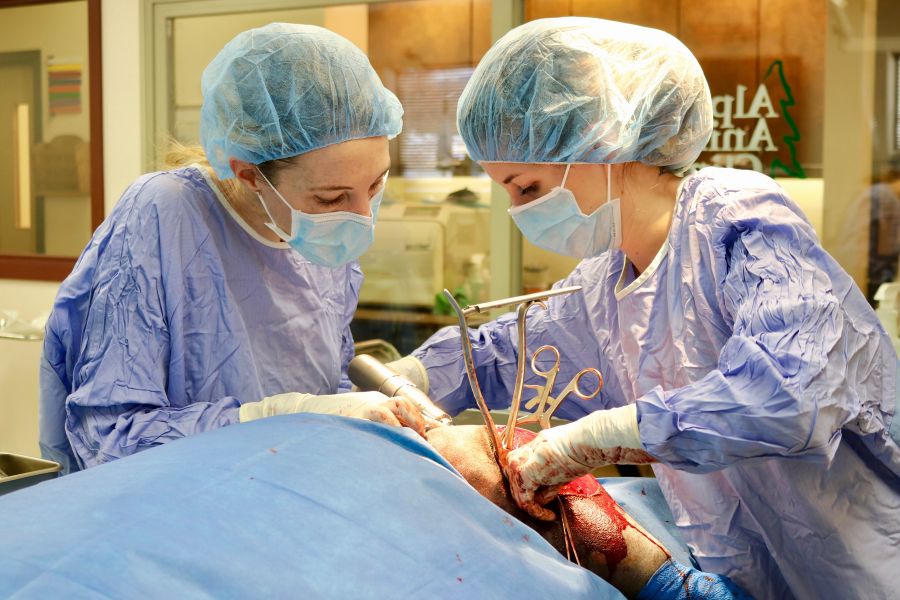Veterinary Topics
Back and Disc Disease
Injury to the spine, intervertebral discs, and spinal cord are very serious and require immediate medical care for the best outcome. Quick intervention can preserve function and limit damage to the spinal cord. Weakness, stumbling, dragging toes or a limb, or inability to stand can all be symptoms of back or disc injury. Back injury is a medical EMERGENCY!

Disc Disease Symptoms
- Weakness of one or multiple limbs, most commonly hind legs, and you might see shaking, trembling, or inability to stand
- Irregular placement of feet when walking that might appear as wobbling, weaving, or knuckling over
- Complete inability to use or feel hind legs or tail
- If the spine injury is near the head or neck, you might see the inability to turn the head or bend the neck
Depending on where the injury might be, some animals are very painful and might even cry out, whereas others cannot feel their limbs at all. A thorough neurologic exam by one of our veterinarians will help pinpoint the problem, which might include imaging such as an X-ray or CT Scan.

Certain cases of back injury might require immediate surgery to improve function and limit destruction to the spinal cord. The longer the time between injury and surgery, the less likely your pet will recover function, so back injuries are considered extreme emergencies. Consultation with a veterinarian will help you determine if surgery is recommended for your pet and what the risks versus benefits might be.
Medical Management and Rehabilitation
Most cases of back and spinal cord injury do not require surgery and are managed with medications to reduce spinal cord swelling and dysfunction. Pain control and physical rehabilitation will also greatly enhance your pet’s comfort and recovery. Alpine Animal Clinic is unique in offering rehabilitation care with an underwater treadmill.
Our state-of-the-art Rehabilitation Center is complete with a water treadmill to accurately and specifically target your pet’s needs by pinpointing the depth of water and, thereby, the amount of weight-bearing, resistance, and strength training as your pet recovers. Simply floating and swimming in a pool does not allow changes in your pet’s condition by increasing resistance and ability to bear weight gradually, but simply floating them passively with a life jacket. A water treadmill allows passive floatation, too, for any size patient but has the great advantage of allowing a careful and gradual return to weight-bearing and resistance to effectively increase muscle tone, coordination, and condition. This improves recovery and strength far beyond a simple swimming pool.
